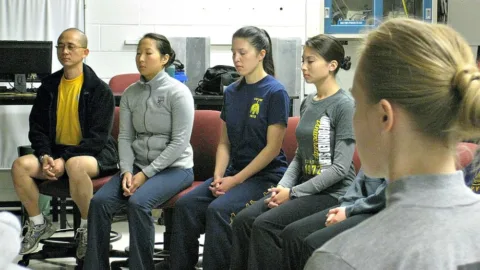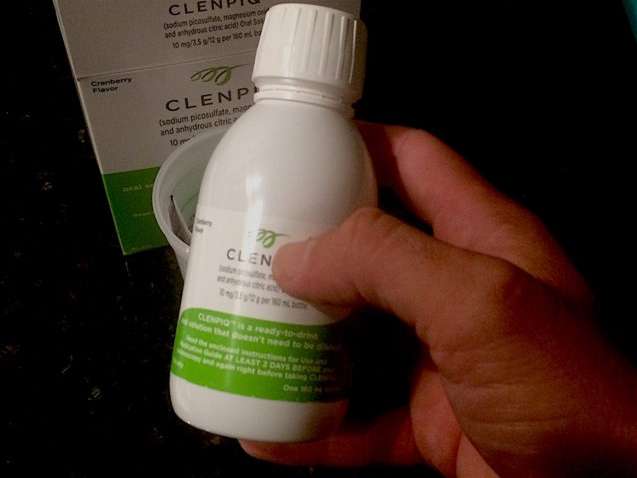Do you suffer from anxiety and aren’t sure why? Do you feel triggered or unsettled when you are confronted with the same situation over and over?
You might be suffering from post traumatic stress disorder and you don’t even know it. That’s what happened to me.
I’d been through a horrific divorce and a series of events that followed — like stalking, false accusations resulting in 2 short stays in jail, being handcuffed in front of my kids, losing my children to my ex and his wife, and more (yes, there’s more).
I thought PTSD was only for war veterans and survivors of 9/11. I was wrong!
Recovering from a traumatic experience requires that the painful emotions be thoroughly processed. Much like going through the grieving process, trauma feelings can’t be repressed or forgotten.
If they aren’t dealt with directly, the distressing feelings and troubling events can replay over and over in the course of your lifetime. This is what causes post traumatic stress disorder.
Here’s what you should know about the causes of PTSD, Post Traumatic Stress Disorder symptoms, and treatment options available for PTSD.
What Is PTSD?
PTSD has been known by many names in the past — such as “shell shock” during the years of World War I and “combat fatigue” after World War II. But PTSD doesn’t just happen to combat veterans.
PTSD affects approximately 3% to 5% of U.S. adults. An estimated 1 in 11 people will experience PTSD in their lifetime.
A diagnosis of PTSD requires exposure to an upsetting traumatic event. However, exposure could be indirect rather than first hand. For example, PTSD could occur in an individual who learns that a close family member or friend has died accidentally or violently. Source
What Are The Causes Of PTSD?
There are numerous events that can cause Post Traumatic Stress Disorder. Because there are so many situations that can cause PTSD, it often goes undiagnosed.
If you’re a victim of ongoing abuse, you really might think it’s “all your fault” or “you should be able to deal with this better.” But it’s important to realize that oftentimes we need to be told that it’s okay to ask for help when dealing with Post Traumatic Stress Disorder symptoms.
I had to be told that the things that happened to me weren’t normal, and that they constituted trauma.
I once heard Judith Herman, who specializes in trauma therapy, define a traumatic event as one in which you feel sheer terror and utter helplessness at the same time.
In the past, I had experienced those feelings. I didn’t realize they are considered causes of PTSD until I began working with a therapist who specializes in trauma recovery.
Here’s a short list of some causes of PTSD:
- Being involved in or watching a serious road accident.
- Receiving violent personal assault — such as sexual assault, mugging, or robbery.
- Witnessing a violent death.
- Being in military combat.
- Receiving prolonged sexual abuse, violence, or severe neglect.
- Witnessing terrorist attacks — like 9/11, the Manchester bombing, etc.
- Being held hostage.
- Witnessing a natural disaster — such as severe flood, earthquake, tornado, or tsunami.
- Being diagnosed with a life-threatening condition.
- Witnessing an unexpected severe injury or death of a close family member or friend.
What Are Post Traumatic Stress Disorder Symptoms?
Unlike common mishaps, traumatic events generally involve threats to life or bodily integrity — or a close personal encounter with violence or death.
Traumatic situations confront human beings with feelings of helplessness and terror, and evoke a response of catastrophe. Source
Understanding how damaging trauma is becomes helpful when determining if someone is suffering from Post Traumatic Stress.
Here are some Post Traumatic Stress Disorder symptoms:
- You have intrusive thoughts such as repeated, involuntary memories, distressing dreams, or flashbacks of the traumatic event. Your flashbacks may be so vivid that you feel you are re-living the traumatic experience or seeing it before your eyes.
- You avoid reminders of the traumatic event by avoiding people, places, activities, objects, and situations that bring on distressing memories. You may try to avoid remembering or thinking about the traumatic event. You might resist talking about what happened or how you feel about it.
- You have negative thoughts and feelings that may include ongoing and distorted beliefs about your or others (e.g., “I am bad,” “No one can be trusted”). Ongoing fear, horror, anger, guilt, and shame are also Post Traumatic Disorder symptoms. You may even be less interested in activities that you previously enjoyed.
- You are irritable and have angry outbursts, behave recklessly or in a self-destructive way, are easily startled, or have problems concentrating or sleeping.
According to our diagnostic manual, one must have symptoms for at least 1 month following an event to receive a PTSD diagnosis. In some cases, particularly where it’s not treated, PTSD can last a very long time — perhaps the remainder of one’s life. Most people with longstanding PTSD find that the symptoms aren’t steady in their severity. For some people, the symptoms gradually fade over time. Source
How To Recover From Trauma
According to the U.S. Department of Veteran Affairs’ National Center for PTSD, Cognitive Behavioral Therapy (CBT) is the best way to treat Post Traumatic Stress Disorder symptoms.
The 2 most effective forms of Cognitive Behavioral Therapy for treating PTSD are:
- Prolonged Exposure (PE) Therapy
- Cognitive Processing Therapy (CPT)
Prolonged Exposure (PE) — PE has 4 main parts: Education about PTSD and PE, Breathing Retraining, In-vivo Exposure, and Imaginal Exposure. Completing 8 to 15 weekly sessions of PE typically shows a noticeable improvement in PTSD symptoms.
Here’s what you can expect during this type of PTSD treatment:
- You’ll learn how to confront memories, feelings, and situations you’ve avoided since the trauma. By decreasing avoidance (one of the underlying causes of PTSD), you can recover.
- Plan to walk through those painful memories in a safe place and take part in activities that you may have avoided in the past.
Cognitive Processing Therapy (CPT) — CPT is a 12-session psychotherapy for PTSD. After a traumatic event, you might blame yourself for things you couldn’t have changed. CPT helps you understand that the traumatic event you lived through was not your fault. In CPT, your therapist helps you understand and change how you think about your trauma and its aftermath. Your goal is to understand how certain thoughts about your trauma cause you stress and make your symptoms worse.
Here are some outcomes you can expect with this type of PTSD treatment:
- You will identify thoughts about the world and yourself that are making you feel afraid or upset.
- You’ll be able to replace those thoughts with more accurate and less distressing thoughts.
- You will learn ways to cope with feelings such as anger, guilt, and fear.
You Don’t Have To Suffer… There’s An App For That!
If you’re anything like me, you might need some help between your treatment sessions — because Post Traumatic Stress Disorder symptoms aren’t the easiest to deal with on your own.
The following apps each have features that can mentor, aid, and help to rehabilitate you. They work best when used in conjunction with ongoing treatment.
Apps that help with PTSD symptoms:
- CPT Coach – Helps you work with your therapist during Cognitive Processing Therapy (CPT). The app helps you keep track of homework, appointments, and PTSD symptoms. CPT Coach is not a self-help tool.
- PE Coach – To be used during Prolonged Exposure (PE) therapy with a mental health professional. PE Coach is not a self-help tool.
- Mood Coach – Helps you learn and practice Behavioral Activation. This app is designed to help you make a plan to boost your mood with positive activities and by tracking your progress.
Group therapy and family therapy are also very effective ways to process trauma.
I have found so much support in my trauma group — and I really know that they understand because they suffer from post traumatic stress as well.
Mindfulness meditation is also helpful when dealing with Post Traumatic Stress Disorder symptoms.
Remember that you are not alone, you might need medical intervention as well, and it’s absolutely not a sign of weakness to ask for help.
More Resources If You Suffer From Post Traumatic Stress
In addition to the links I included above, I found these sites helpful when dealing with Post Traumatic Stress Disorder symptoms:
- How To Find A Good Trauma Therapist
- Online PTSD Screening Quiz
- Personal Stories Of PTSD Recovery Successes
NOTE: In no way do I want this article to take away from the war veterans that suffer from PTSD. I am grateful to each and every one of you and thank you for your service.






